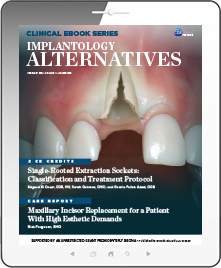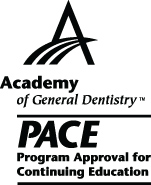CDEWorld > eBooks > Implantology Alternatives


ADA CERP is a service of the American Dental Association to assist dental professionals in identifying quality providers of continuing dental education. ADA CERP does not approve or endorse individual courses or instructors, nor does it imply acceptance of credit house by boards of dentistry. Concerns or complaints about a CE provider may be directed to the provider or to ADA CERP at www.ada.org/cerp/

Approved PACE Program Provider. FAGD/MAGD credit. Approval does not imply acceptance by a state or provincial board of dentistry, or AGD endorsement. 1/1/2023 to 12/31/2028. ID # 209722.
eBook
Released: Tuesday, February 7, 2023
Expires: Saturday, January 31, 2026
Implantology Alternatives
Commercial Supporter: Dentsply Sirona - Equipment & Technology
This thematic CDEWorld eBook on implantology features a continuing education (CE) article on single-rooted extraction socket factors and their role in determining optimal implant placement timing and technique. This eBook also includes a case report on the placement of an implant-supported crown in the esthetic zone. Download to earn 2 FREE CEU now!
FEATURED CONTENT
CE: Single-Rooted Extraction Sockets: Classification and Treatment Protocol
Edgard El Chaar, DDS, MS; Sarah Oshman, DMD; and Pooria Fallah Abed, DDS
This article presents a straightforward yet thorough classification for extraction sockets of single-rooted teeth and provides guidance to clinicians in the selection of appropriate and predictable treatment. The presented classification of extraction sockets for single-rooted teeth focuses on the topography of the extraction socket, while the protocol for treatment of each socket type factors in the shape of the remaining bone, the biotype, and the location of the socket, whether it be in the mandible or maxilla. This system is based on the biologic foundations of wound healing and can help guide clinicians to successful treatment outcomes.
Credits: 2 Self-Study CEU
Cost: $0
Provider: Conexiant Education
Maxillary Incisor Replacement for a Patient With High Esthetic Demands
Rick Ferguson, DMD
This case report demonstrates the use of partial extraction therapy for immediate implant placement in a patient with high esthetic demands. Because it can help retain the dimensions of the existing gingival architecture without detriment to the osseointegration of the implant, partial extraction is shown to be beneficial in this patient requiring replacement of a maxillary incisor.


